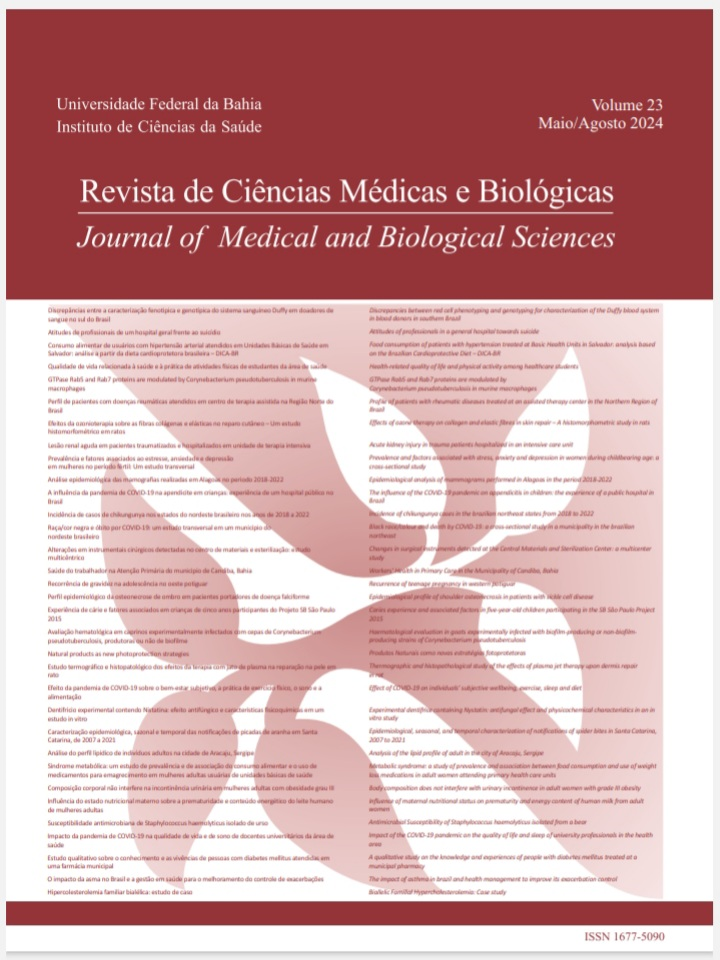Thermographic and histopathological study of the effects of plasma jet therapy upon tissue repair in rats
Thermographic and histopathological study of the effects of plasma jet therapy upon tissue repair
DOI:
https://doi.org/10.9771/cmbio.v23i2.55290Palabras clave:
Plasma jet, Biomodulatory therapy, Tissue repair, Thermography, Histological analysisResumen
Background: Biomodulatory therapies have been used to improve the healing pattern and assist in tissue repair. The plasma jet is a therapy that has been currently indicated for dermatological use and aesthetic purposes. The aim of this study was to evaluate the effects of plasma jet on repair of skin wounds in rats through thermographic imaging and histopathological analysis. Methods: 20 Wistar rats were divided into Control Group (CG) and Plasma Jet Group (PJG). A cutaneous surgical wound was performed on the back of the animals and thermographic recording was performed at different periods. Only the PJG was submitted to plasma jet therapy, immediately after the surgery and in the following two days. Half of the animals in each group were sacrificed on the 5th day, after the surgical procedure, and another half on the 10th day. A sample of tissue from the animals was removed and processed for histological analysis. Results: Thermograms showed greater variation in the thermal coefficient in the PJG especially on the 5th day (p>0.05). These results confirm the histological findings in this period that exhibited greater collagen biosynthesis in the dermis (p<0.05). Conclusion: Plasma jet treatment was able to promote an improvement in the collagen fibers pattern and the use of Infrared Thermography was useful to monitor tissue repair.
Descargas
Descargas
Publicado
Cómo citar
Número
Sección
Licencia
Derechos de autor 2024 Journal of Medical and Biological Sciences

Esta obra está bajo una licencia internacional Creative Commons Atribución 4.0.
A Revista de Ciências Médicas e Biológicas reserva-se todos os direitos autorais dos trabalhos publicados, inclusive de tradução, permitindo, entretanto, a sua posterior reprodução como transcrição, com a devida citação de fonte. O periódico tem acesso livre e gratuito.






